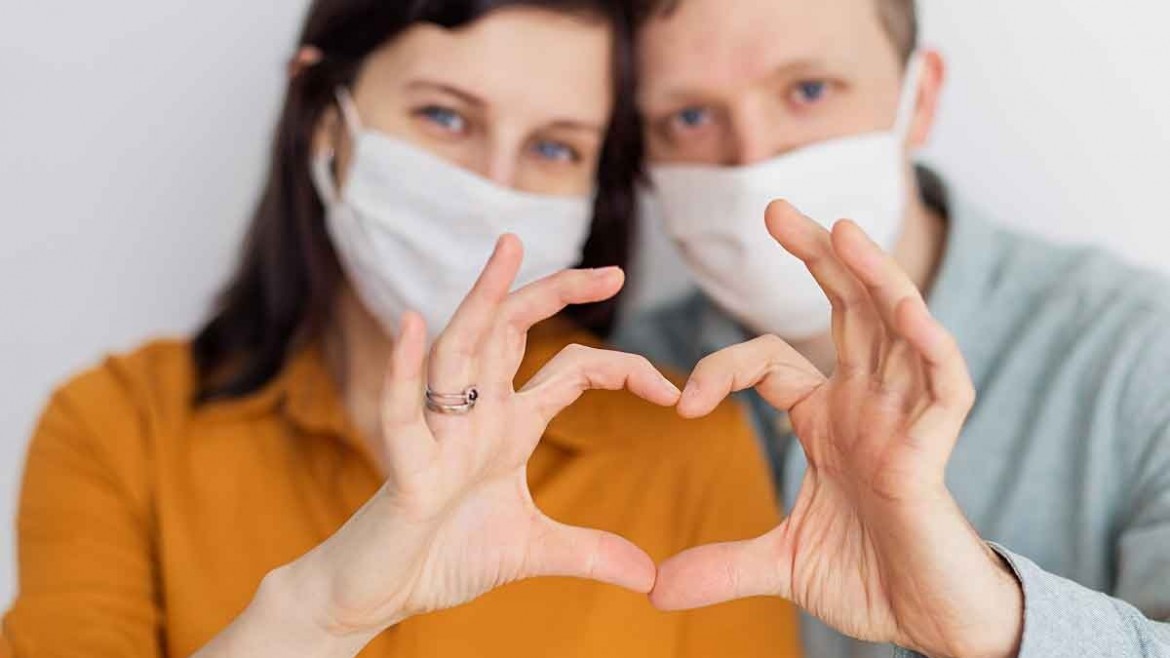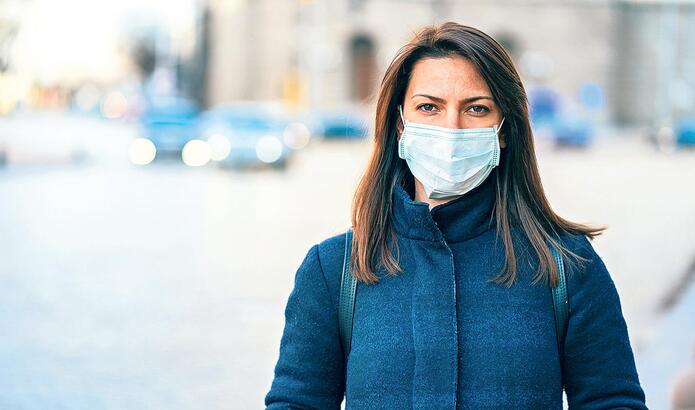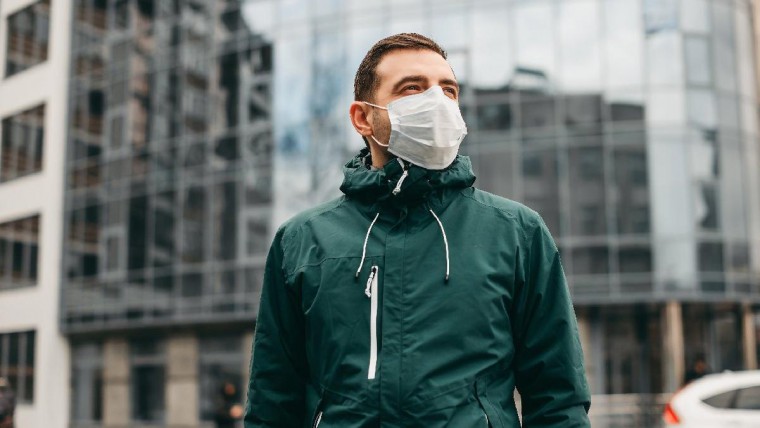The mask is a personal protective equipment that protects people against dust and particles of physical, chemical, biological agents.
What Are Masks Protecting Us?
Droplets
The primary reason for wearing a breathing mask is to protect it from droplets. For example, if a sick person coughs or sneezes when near us, the breathing mask creates a barrier to prevent bodily fluids from reaching our face. The droplets are large and gravity drags them to land on objects rather than stay in the air. So they cannot travel very long distances.
Aerosols
You can imagine someone creating two problems when sneezing, the first is the sprayed droplets that travel a short distance, and the other is the aerosolized virus particles that stay in the air longer. The results of the researches show that the virus remains in the air at a measurable level for 3 hours.
Mouth and Nose
As the mask covers our face, it makes it very difficult for us to touch an infected object with our hands and then transfer the virus to our mouth and nose by taking our hand away.
Mask Types
Today, two different classes of masks are manufactured: surgical medical mask (“surgical mask”) and respiratory system protective masks (“breathing mask”).
Surgical masks are designed to limit the transmission of infectious agents from personnel to patients during surgical procedures and are made of paper or fabric in 2 or 3 layers. TSE-EN 14236 standard is used for surgical medical masks in our country.
Features of surgical masks:
It is loosely attached to the face, covering the nose and mouth.
Designed for one-way protection, retains body fluid.
Masks are not designed to protect the person wearing it, the purpose is to protect the other person.
The vast majority of masks do not have a standardized safety rating.
Respirators are masks with particulate filter respirators. They are classified as N95, N99 N100 according to the standards set by the American Institute of Occupational Safety and Health. On the other hand, European standards classify masks as FFP1, FFP2, FFP3, the letters FFP are the initials of filtering face piece, which means particle filter. The Turkish Standards Institute has established the TSE-EN 149 standard for these masks.
Features of respirators:
They are tight fitting masks designed to create a seal.
Valveless masks provide two-way protection by filtering both the air inlet and outlet.
These masks are designed to protect the wearer as long as they are used properly.
There are disposable, half-face or full-face types.
Although different names are used in America and Europe, the categorization for respiratory system protective masks is the same and this categorization is related to how many times the filters reduce the risk of aerosol contamination.
Filtering efficiency of different respirators for 0.3 micron and larger particles is as follows;
At least 80% in FFP1 & P1
At least 94% in FFP2 & P2
At least 95% in N95
At least 99% in N99 & FFP3
At least 99.95% in P3
At least 99.97% in the N100
The markings on the mask describe the properties of the mask.
Mask with and without valve
There is no difference in protection between respirators with and without valves. In those with a valve, it is a little easier to breathe and the glasses fog up less, especially if glasses are used together. In addition, less moisture accumulates in the mask thanks to the valve.
However, valved respirators may not be useful in situations where the user wants to stop spreading the infection. If the wearer is sick, it means that their breaths, coughs and sneezes will pass through the mask without filtering, because when exhaling, the valve opens and releases particles, due to the nature of the mask.
Reuse of Respirator
The pore structure of respirators is in a certain standard range, this pore diameter starts to change with the use of the mask. As the mask holds dust over time, its pores are closed, and some pores increase in diameter due to breathing. Likewise, washing with water or cleaners also causes deformation in these pore diameters. Therefore, the duration of use of the respirator can vary according to variables such as the pollution of the air, the breathing rate of the person, the weight of the person. However, since these masks are mostly in the disposable mask class, they are not recommended to be used for long periods.
So, how should we sterilize respirators for multiple uses without disturbing the filtering function? Different methods are explained below, accordingly, the most useful method is to leave the mask in the open air in daylight. It is not recommended to disinfect masks in the home oven, as there is a risk of spreading the virus into the home, especially in the dining area.
Alcohol: While cleaning with 70% alcohol can kill viruses, it significantly reduces the filtering capacity.
Washing: Washing masks removes viruses while significantly reducing their filtering capacity.
Time: Current research shows that the virus cannot survive on plastic for longer than 3 days (72 hours) and less on other materials. For this reason, leaving the respirator in quarantine for this period or longer kills the virus, that is, it makes it inactive.
Oven Temperature: Leaving in an oven at 70 ° C for 30 minutes may be enough to kill the virus.
UV Light: UV-C light in particular can kill the virus in sufficient dose without damaging the breathing mask.
Can Surgical Masks Filter The New Coronavirus?
The most important difference between respirators and surgical masks is that surgical masks do not have a tight seal due to leaving gaps on the edges. Since there is not enough research done, it is not known exactly how much protection surgical masks provide against coronavirus. However, the few studies that exist have shown that the surgical mask can provide better protection than none.
In the guideline published by the World Health Organization (WHO), it has made recommendations for the use of masks, accordingly:
Healthcare professionals are recommended to use masks with protection of at least FFP3 (N95) or above FFP2 as personal protective equipment during patient examination.
It is stated that surgical medical masks are sufficient for people walking around in public.



